-
 Bitcoin
Bitcoin $108,489.6704
1.13% -
 Ethereum
Ethereum $2,502.0528
2.92% -
 Tether USDt
Tether USDt $1.0002
0.00% -
 XRP
XRP $2.1941
0.51% -
 BNB
BNB $655.3375
1.00% -
 Solana
Solana $151.5977
1.27% -
 USDC
USDC $0.9999
0.00% -
 TRON
TRON $0.2768
0.32% -
 Dogecoin
Dogecoin $0.1676
2.86% -
 Cardano
Cardano $0.5675
0.98% -
 Hyperliquid
Hyperliquid $40.6109
7.48% -
 Bitcoin Cash
Bitcoin Cash $500.7746
2.09% -
 Sui
Sui $2.8328
2.03% -
 Chainlink
Chainlink $13.4452
1.26% -
 UNUS SED LEO
UNUS SED LEO $9.1623
0.39% -
 Avalanche
Avalanche $18.2267
2.24% -
 Stellar
Stellar $0.2382
0.00% -
 Toncoin
Toncoin $2.8885
1.68% -
 Shiba Inu
Shiba Inu $0.0...01159
0.91% -
 Litecoin
Litecoin $87.1827
0.88% -
 Hedera
Hedera $0.1511
2.90% -
 Monero
Monero $315.4992
-0.59% -
 Polkadot
Polkadot $3.4663
2.34% -
 Bitget Token
Bitget Token $4.6118
-0.65% -
 Dai
Dai $1.0000
-0.01% -
 Ethena USDe
Ethena USDe $1.0003
0.02% -
 Uniswap
Uniswap $7.2989
4.69% -
 Pepe
Pepe $0.0...01003
5.73% -
 Aave
Aave $275.5616
7.15% -
 Pi
Pi $0.5181
-2.49%
How to deal with the high-level passivation of the KDJ indicator?
The KDJ indicator's high-level passivation in crypto trading can mislead traders by staying overbought during strong uptrends, requiring additional tools like moving averages and volume analysis for accurate signals.
Jun 30, 2025 at 02:14 pm
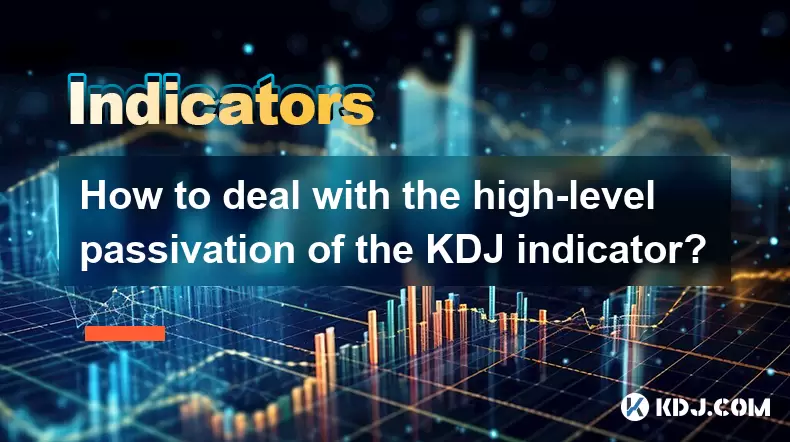
Understanding the KDJ Indicator and Its Role in Cryptocurrency Trading
The KDJ indicator, also known as the stochastic oscillator with J line modification, is a momentum-based technical analysis tool widely used in cryptocurrency trading. It consists of three lines: K, D, and J, which reflect overbought and oversold conditions. Traders often rely on it to detect potential trend reversals or confirm ongoing trends. However, one of the challenges faced by traders is the high-level passivation of the KDJ indicator, especially during strong uptrends where the indicator remains in overbought territory for extended periods.
High-level passivation refers to a situation where the KDJ indicator stays above 80 (overbought zone) without showing any significant reversal signals. This phenomenon can mislead traders into thinking that a reversal is imminent when, in fact, the price may continue rising.
Why Does High-Level Passivation Occur in the KDJ Indicator?
In cryptocurrency markets, high volatility and rapid price movements often cause traditional indicators like KDJ to become less effective. When a cryptocurrency asset experiences a powerful bullish surge, the KDJ lines—particularly the K and D lines—may remain in the overbought area for an extended period.
This occurs because:
- The calculation mechanism of the KDJ relies on historical price ranges within a set period (usually 14), which may not adapt quickly enough to sudden market shifts.
- During strong uptrends, the price keeps making new highs, resetting the reference range and keeping the KDJ values elevated.
- In highly liquid or speculative crypto assets, market psychology overrides technical levels, causing indicators to lose their predictive edge temporarily.
Identifying High-Level Passivation in Real-Time Charts
To effectively manage KDJ passivation, traders must first be able to identify it in real-time charts. The key signs include:
- K line and D line consistently above 80 for multiple candlesticks without crossing below.
- The J line remains extremely high (e.g., above 100) and doesn't show divergence with price action.
- Price continues to rise despite the KDJ being in overbought territory, indicating a false signal.
Using platforms like TradingView or Binance's native charting tools, traders can overlay the KDJ indicator and observe its behavior alongside volume and moving averages to gain more context.
Strategies to Deal with KDJ High-Level Passivation
When facing high-level passivation, relying solely on KDJ signals can lead to premature exits or missed opportunities. Here are several strategies to mitigate this issue:
- Combine with Moving Averages: Use a 50-period or 200-period EMA to confirm the overall trend direction. If the price remains above these moving averages, passivation may indicate strength rather than weakness.
- Add Volume Analysis: Rising volume during KDJ passivation suggests continued buying pressure. Tools like OBV (On-Balance Volume) can help validate the strength behind the move.
- Use Trendlines and Channels: Draw support and resistance lines to assess whether the current trend has intact structure, even if KDJ appears overbought.
- Monitor Price Action Patterns: Candlestick formations such as engulfing patterns or inside bars can offer better timing signals than KDJ alone.
Customizing KDJ Settings to Reduce False Signals
By default, most trading platforms use a 14-period setting for the KDJ indicator. However, adjusting these settings can sometimes reduce the impact of high-level passivation.
Steps to customize KDJ settings:
- Access the indicator settings panel in your trading platform.
- Adjust the lookback period from 14 to higher values (e.g., 21 or 30) to smooth out the K and D lines.
- Modify the smoothing factor for the D line to reduce sensitivity.
- Experiment with different multipliers for the J line to adjust how aggressively it reacts to price changes.
These adjustments should be tested using historical data or backtesting features available on platforms like TradingView or MetaTrader 5.
Frequently Asked Questions
Q1: Can I disable the J line in the KDJ indicator?
Yes, many platforms allow you to hide the J line or adjust its visibility through the indicator settings. Removing it might help reduce visual noise during strong trends.
Q2: Is high-level passivation unique to the KDJ indicator?
No, other oscillators like RSI and MACD can also exhibit similar behavior during strong trends. However, KDJ tends to react more sensitively due to its calculation method.
Q3: How do I know if the KDJ passivation is about to reverse?
Watch for bearish divergence between the KDJ and price, a sharp drop in volume, or a break below key moving averages. These could serve as early warning signs.
Q4: Should I ignore KDJ entirely during high-level passivation?
Not necessarily. Instead, treat it as a secondary confirmation tool rather than a primary signal generator. Combine it with other methods for better accuracy.
Disclaimer:info@kdj.com
The information provided is not trading advice. kdj.com does not assume any responsibility for any investments made based on the information provided in this article. Cryptocurrencies are highly volatile and it is highly recommended that you invest with caution after thorough research!
If you believe that the content used on this website infringes your copyright, please contact us immediately (info@kdj.com) and we will delete it promptly.
- Rekt, Ovie Faruq, and the Movement: How a Crypto Meme Became a Consumer Brand
- 2025-06-30 21:10:14
- BlockDAG, Crypto Loyalty, and the XRP Slide: What's the Buzz?
- 2025-06-30 21:10:14
- Cryptos to Invest in Now: Spotting the Future Giants
- 2025-06-30 20:50:12
- PENGU's Upside Rally: Decoding the Stock Potential
- 2025-06-30 21:15:12
- Arbitrum, Robinhood, and Pullback Risk: Decoding the Latest Buzz
- 2025-06-30 21:20:12
- Chainlink Price Prediction: Will LINK Hit $13 Peak or Face Correction?
- 2025-06-30 21:25:11
Related knowledge
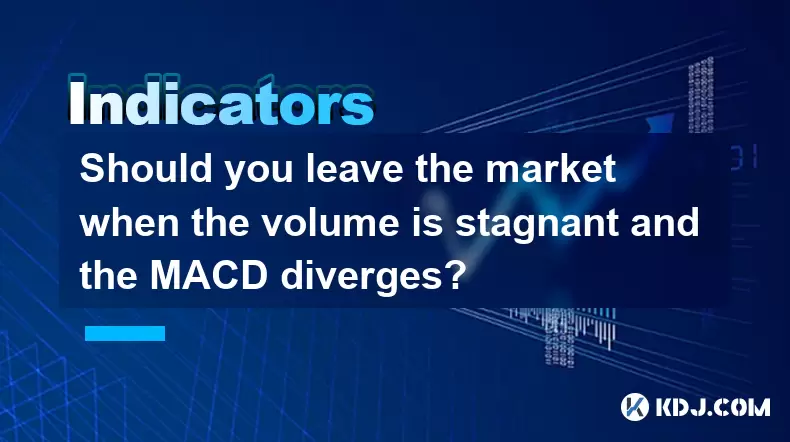
Should you leave the market when the volume is stagnant and the MACD diverges?
Jun 30,2025 at 09:36pm
Understanding Volume Stagnation in Cryptocurrency TradingIn the realm of cryptocurrency trading, volume plays a crucial role in determining the strength of price movements. When volume remains stagnant over an extended period, it suggests that neither buyers nor sellers are showing strong conviction. This often leads to sideways movement or consolidatio...
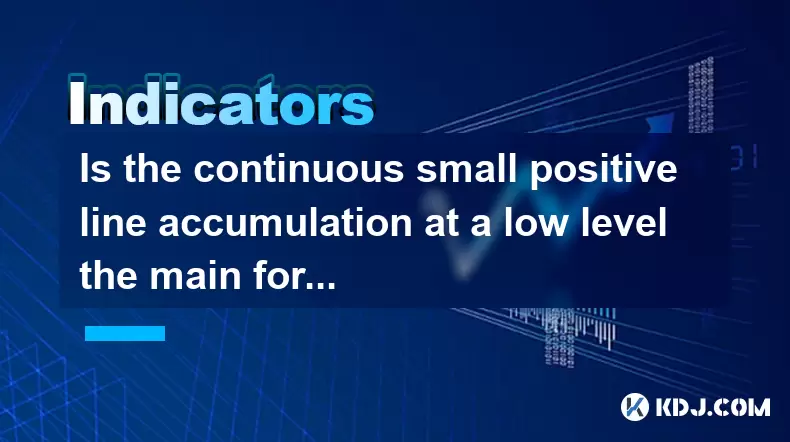
Is the continuous small positive line accumulation at a low level the main force to build a position?
Jun 30,2025 at 08:15pm
Understanding the Concept of Continuous Small Positive Line AccumulationIn cryptocurrency trading, continuous small positive line accumulation refers to a pattern where an asset experiences multiple consecutive candlesticks or bars that close higher than they open, but with relatively low volume and minimal price movement. This phenomenon is often obser...
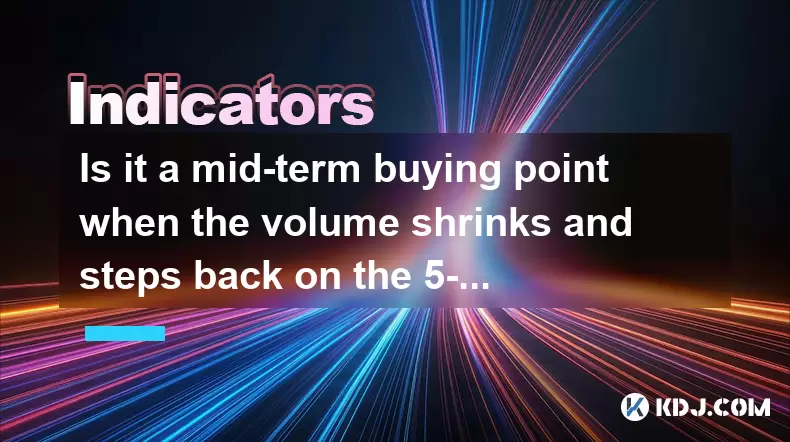
Is it a mid-term buying point when the volume shrinks and steps back on the 5-week line in the upward trend?
Jun 30,2025 at 07:49pm
Understanding the 5-Week Moving Average in Cryptocurrency TradingIn cryptocurrency trading, technical indicators such as the 5-week moving average are widely used to assess long-term trends. This indicator smooths out price volatility over a five-week period and provides traders with a clearer picture of the direction in which an asset is moving. When a...
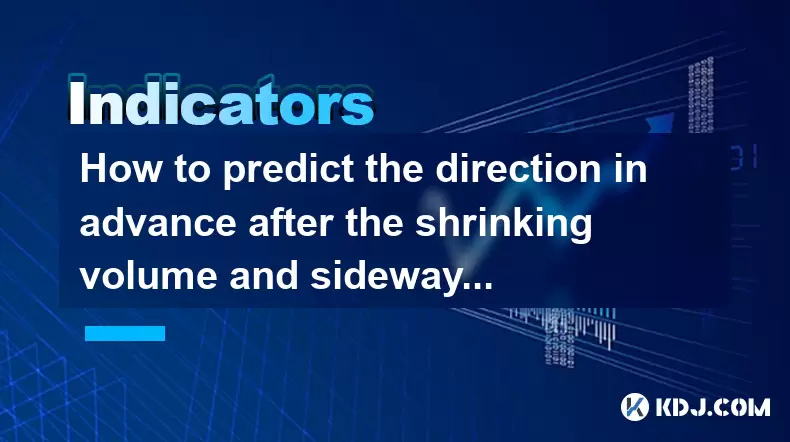
How to predict the direction in advance after the shrinking volume and sideways shock?
Jun 30,2025 at 08:57pm
Understanding Shrinking Volume and Sideways ShockIn the cryptocurrency market, shrinking volume refers to a period where trading activity significantly decreases. This often indicates a lack of interest or uncertainty among traders regarding the next price movement. Simultaneously, sideways shock occurs when the price moves within a narrow range without...
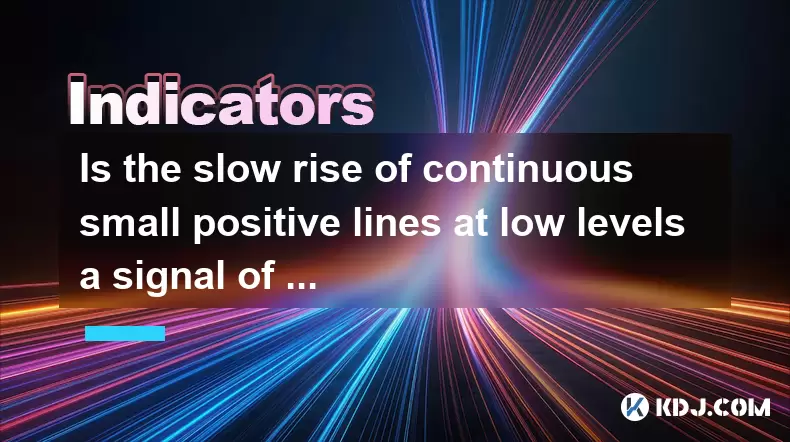
Is the slow rise of continuous small positive lines at low levels a signal of the main force absorbing funds?
Jun 30,2025 at 07:00pm
Understanding the Concept of Continuous Small Positive Lines in CryptocurrencyIn the realm of cryptocurrency trading, price patterns are often analyzed to predict future movements. One such pattern is the slow rise of continuous small positive lines at low levels, which refers to a situation where an asset’s price gradually increases over time through a...
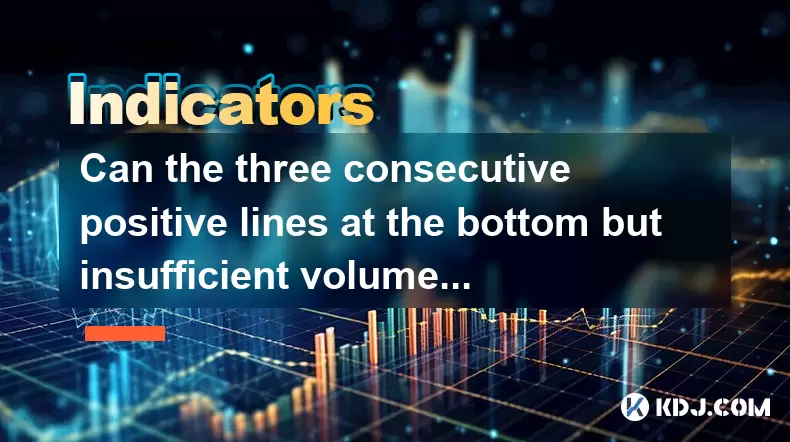
Can the three consecutive positive lines at the bottom but insufficient volume confirm the trend reversal?
Jun 30,2025 at 09:28pm
Understanding the Context of Three Consecutive Positive CandlesIn technical analysis, observing three consecutive positive lines (candles) at the bottom of a downtrend can raise questions about a potential trend reversal. These candles typically indicate that buyers have started to exert pressure after a prolonged decline. However, merely seeing these b...

Should you leave the market when the volume is stagnant and the MACD diverges?
Jun 30,2025 at 09:36pm
Understanding Volume Stagnation in Cryptocurrency TradingIn the realm of cryptocurrency trading, volume plays a crucial role in determining the strength of price movements. When volume remains stagnant over an extended period, it suggests that neither buyers nor sellers are showing strong conviction. This often leads to sideways movement or consolidatio...

Is the continuous small positive line accumulation at a low level the main force to build a position?
Jun 30,2025 at 08:15pm
Understanding the Concept of Continuous Small Positive Line AccumulationIn cryptocurrency trading, continuous small positive line accumulation refers to a pattern where an asset experiences multiple consecutive candlesticks or bars that close higher than they open, but with relatively low volume and minimal price movement. This phenomenon is often obser...

Is it a mid-term buying point when the volume shrinks and steps back on the 5-week line in the upward trend?
Jun 30,2025 at 07:49pm
Understanding the 5-Week Moving Average in Cryptocurrency TradingIn cryptocurrency trading, technical indicators such as the 5-week moving average are widely used to assess long-term trends. This indicator smooths out price volatility over a five-week period and provides traders with a clearer picture of the direction in which an asset is moving. When a...

How to predict the direction in advance after the shrinking volume and sideways shock?
Jun 30,2025 at 08:57pm
Understanding Shrinking Volume and Sideways ShockIn the cryptocurrency market, shrinking volume refers to a period where trading activity significantly decreases. This often indicates a lack of interest or uncertainty among traders regarding the next price movement. Simultaneously, sideways shock occurs when the price moves within a narrow range without...

Is the slow rise of continuous small positive lines at low levels a signal of the main force absorbing funds?
Jun 30,2025 at 07:00pm
Understanding the Concept of Continuous Small Positive Lines in CryptocurrencyIn the realm of cryptocurrency trading, price patterns are often analyzed to predict future movements. One such pattern is the slow rise of continuous small positive lines at low levels, which refers to a situation where an asset’s price gradually increases over time through a...

Can the three consecutive positive lines at the bottom but insufficient volume confirm the trend reversal?
Jun 30,2025 at 09:28pm
Understanding the Context of Three Consecutive Positive CandlesIn technical analysis, observing three consecutive positive lines (candles) at the bottom of a downtrend can raise questions about a potential trend reversal. These candles typically indicate that buyers have started to exert pressure after a prolonged decline. However, merely seeing these b...
See all articles

























































































